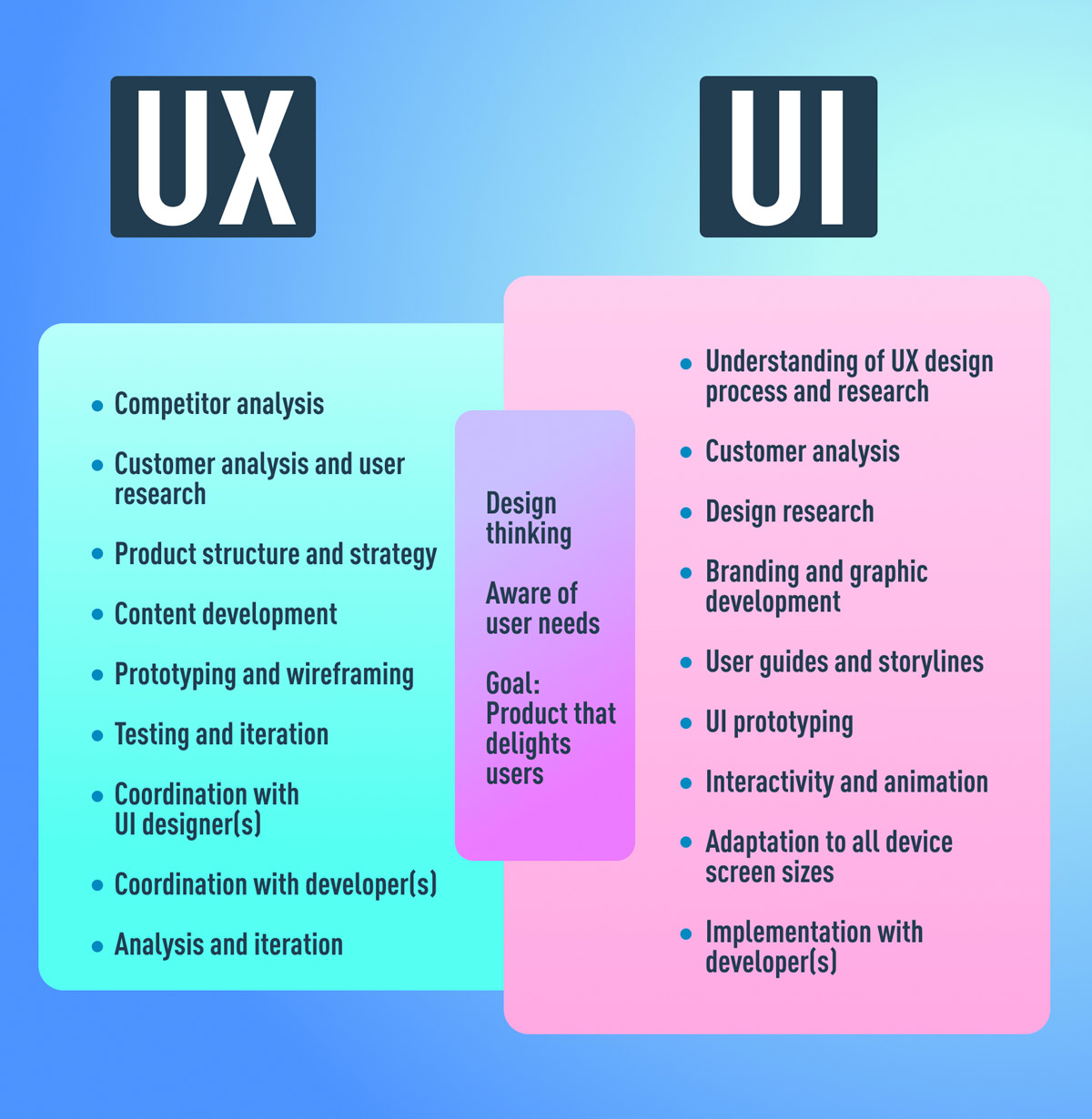Introduction:
User experience (UX) and user interface (UI) design are critical components of effective product creation in today’s digital world. While the terms are frequently used interchangeably, UX and UI are different disciplines that play important roles in producing excellent user-centric experiences. Knowing the distinction between UX and UI is critical for human resource managers who want to create successful design teams and achieve commercial success. In this blog article, we’ll look at the differences between UX and UI design, offer practical examples, and underline the significance of the divide.
Body:
Defining User Experience and User Interface Design:
UX Design: UX design focuses on increasing customer happiness by improving a product’s usability, accessibility, and overall experience. User research, information architecture, wireframing, and interface design are all part of it.
UI Design: UI design focuses on the visual components of a product, providing appealing, intuitive, and user-friendly interfaces. It include creating design components including buttons, icons, typography, color schemes, and visual hierarchy.
Practical Examples:
Consider a banking app that seeks to simplify the user’s financial management. A UX designer would undertake user research to better understand the demands of consumers, produce wireframes to describe the app’s structure, and provide easy navigation that facilitates transactions.
UI Design: Continuing with the banking app example, a UI designer would work on creating aesthetically appealing interfaces for various screens, picking appropriate colors that express trust, developing clear and actionable buttons, and ensuring visual consistency throughout the app.
Importance of the Distinction:
a. Enhancing User Satisfaction: Increasing User Satisfaction: Good UX design guarantees that users can do their duties easily, resulting in improved satisfaction and engagement.
Example of a Quote: “Making things easy, clear, and seamless is the goal of good UX design. It all comes down to putting the consumer first and developing experiences that genuinely resonate.” – Jane Doe, User Experience Designer.
b. Driving Business Goals: Good user interface design improves brand impression, increases user trust, and fosters customer loyalty, eventually driving company success.
Example of a Quote: “The user interface design is the public face of your product. It is what draws people’ attention, leaves a lasting impression, and sets your business apart from competition.” – John Smith, User Interface Designer.
c. Collaboration and Teamwork: Understanding the separate responsibilities of UX and UI encourages collaboration among designers, resulting in a more holistic approach to product development.
Example of a Quote: “The teamwork of UX and UI designers is analogous to a symphony. Both play separate instruments, yet they work together to provide users with a pleasant and pleasurable experience.” Sarah Johnson is the Product Manager.

Summary
UX and UI design are two disciplines that work together to create excellent user experiences. UX is concerned with improving usability and user happiness, whereas UI is concerned with creating aesthetically appealing and intuitive interfaces. Knowing the distinction between the two is critical for human resource managers because it enables them to form productive design teams that generate excellent products. Organizations may improve user experiences, promote business goals, and nurture a competitive advantage in the digital market by embracing the various skill sets of UX and UI designers and promoting teamwork.
Recall that great UX and UI design work together to create smooth interactions and aesthetically captivating experiences that make a lasting impact on users.





